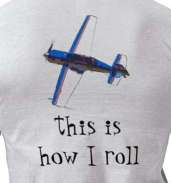 During my visit with Al Kelch he allowed me to step into his time machine. The door to his gigantic old barn, creaked open and the first step forward transported me backward to the roaring 20’s of aviation. I saw parts of planes, old radial engines, and there under the lights: a beautifully restored Stearman Bi-Plane and a high winged Welsh OW8M. There was a J-3 Cub, the aerobatic Decathlon and his most recent project, a Travel Air formerly owned by Robertson Aircraft and flown by Charles Lindbergh.
During my visit with Al Kelch he allowed me to step into his time machine. The door to his gigantic old barn, creaked open and the first step forward transported me backward to the roaring 20’s of aviation. I saw parts of planes, old radial engines, and there under the lights: a beautifully restored Stearman Bi-Plane and a high winged Welsh OW8M. There was a J-3 Cub, the aerobatic Decathlon and his most recent project, a Travel Air formerly owned by Robertson Aircraft and flown by Charles Lindbergh.  Planes from the past, when Walter Beech and Lloyd Stearman joined Clyde Cessna to form a company with surplus WWI aircraft parts called Travel Air. You couldn’t love planes and not like being around Al. It was a close as I’d get to visiting with Charles Lindberg, who he still revered to that day. Aside from his wife Lois, planes were the most important thing and he spent a lifetime promoting aviation. During his life, he rebuilt and restored sixteen vintage planes. I am not aware of anyone matching that feat and many components were painstakingly built from scratch. He and his wife hosted numerous antique aircraft fly ins at their home (photo below).
Planes from the past, when Walter Beech and Lloyd Stearman joined Clyde Cessna to form a company with surplus WWI aircraft parts called Travel Air. You couldn’t love planes and not like being around Al. It was a close as I’d get to visiting with Charles Lindberg, who he still revered to that day. Aside from his wife Lois, planes were the most important thing and he spent a lifetime promoting aviation. During his life, he rebuilt and restored sixteen vintage planes. I am not aware of anyone matching that feat and many components were painstakingly built from scratch. He and his wife hosted numerous antique aircraft fly ins at their home (photo below).
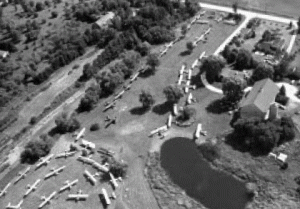
My first flight in a J-3 Cub was after we pushed the taildragger out of his “time machine” and onto the grass strip by his home. Once inside the cockpit, I began looking for missing instruments. (Doesn’t every plane have an attitude indicator and directional gyro?) Fuel gage? It was outside and in front: nothing but a piece of red wire bobbing up and down on a cork. When the wire goes down, so do you. There was no key. Al provided the start by spinning the prop. Flying the little tail dragger with doors open was fun and it was hard. With the wheel located in the back instead of in the nose, the plane acted like a weather vane. Maintaining the centerline was like balancing a pencil on your fingers, with your feet dancing on the rudder pedals. The smell of the grassy field was in the air as we bumped down the runway alongside the barn, lifting off at 40mph. The cruise speed wouldn’t be much different as we leveled off at 65mph. Clearly this plane was for fun and not to get anywhere. My ham fisted techniques were soon rewarded with a whack on the head. The sectional chart smacked me again as Al shouted above the engine noise; “Lighter on the stick!” We were low, slow and had a stiff headwind. Al took over and had the plane smoothly gliding to a near stall. It literally hovered over a house. We were standing still. He laughed: “Actually flew this thing backwards in very strong wind” he paused: “Had traffic backed up for a mile with folks looking up”. I believed him. Before long, we were back on the ground and I was tremendously grateful to Al for sharing part of his life.
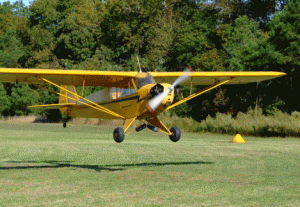
Al is now gone but his legacy lives on in the Vintage Aircraft Association which he labored to establish. He also created the EAA Lindy trophy recognized today as one of aviation’s most prestigious awards for aircraft construction or restoration. Anytime I see a Cub in flight, I smile remembering the most dedicated aviator I’ve ever met.

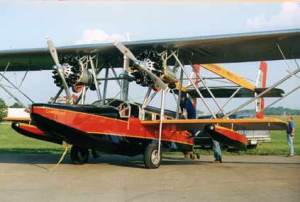 It had a vital role in establishing one of the largest U.S. Corporations: Johnson’s Wax.
It had a vital role in establishing one of the largest U.S. Corporations: Johnson’s Wax.
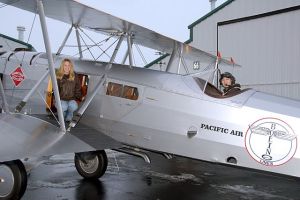
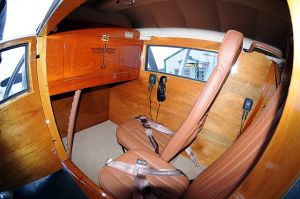
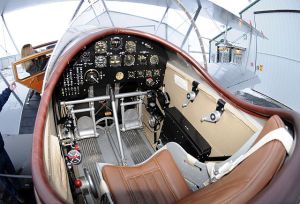

 Despite numerous misadventures, finally got the commercial license and is enjoying aerobatics. My airmanship, like my golf game, says I can't quit my day job.
Despite numerous misadventures, finally got the commercial license and is enjoying aerobatics. My airmanship, like my golf game, says I can't quit my day job. 
